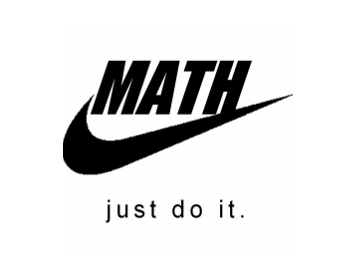This document consists of 7printed pages.© Cambridge University Press & Assessment2024[Turn overCambridge IGCSE™MATHEMATICS0580/22Paper 2 (Extended)February/March2024MARK SCHEMEMaximum Mark: 70PublishedThis mark scheme is published as an aid to teachers and candidates, to indicate the requirements of the examination. It shows the basis on which Examiners were instructed to award marks. It does not indicate the details of the discussions that took place at an Examiners’ meeting before marking began, which would have considered the acceptability of alternative answers.Mark schemes should be read in conjunction with the question paper and the Principal Examiner Report f or Teachers.Cambridge International will not enter intodiscussions about these mark schemes.Cambridge International is publishing the mark schemes f or the February/March2024series f or most CambridgeIGCSE, Cambridge International A and AS Levelcomponents, and some Cambridge O Level components.
0580/22Cambridge IGCSE–Mark SchemePUBLISHEDFebruary/March2024© Cambridge University Press & Assessment2024Page 2of 7Generic Marking PrinciplesThese general marking principles must be applied by all examiners when marking candidate answers. They should be applied alongside the specific content of the mark scheme or generic level descriptions for a question. Each question paper and mark scheme will also comply with these marking principles.GENERIC MARKING PRINCIPLE 1:Marks must be awarded in line with:•the specific content of the mark scheme or the generic level descriptors for the question•the specific skills defined in the mark scheme or in the generic level descriptors for the question•the standard of response required by a candidate as exemplified by the standardisation scripts.GENERIC MARKING PRINCIPLE 2:Marks awarded are always whole marks(not half marks, or other fractions).GENERIC MARKING PRINCIPLE 3:Marks must be awarded positively:•marks are awarded for correct/valid answers, as defined in the mark scheme. However, credit is given for valid answers which go beyond the scope of the syllabus and mark scheme, referring to your Team Leader as appropriate•marks are awarded when candidates clearly demonstrate what they know and can do•marks are not deducted for errors•marks are not deducted for omissions•answers should only be judged on the quality of spelling, punctuation and grammar when these features are specifically assessed by the question as indicated by the mark scheme. The meaning, however, should be unambiguous.GENERIC MARKING PRINCIPLE 4:Rules must be applied consistently, e.g.in situations where candidates have not followed instructions or in the application of generic level descriptors.GENERIC MARKING PRINCIPLE 5:Marks should be awarded using the full range of marks defined in the mark scheme for the question (however; the use of the full mark range may be limited according to the quality of the candidate responses seen).GENERIC MARKING PRINCIPLE 6:Marks awarded are based solely on the requirements as defined in the mark scheme. Marks should not be awarded with grade thresholds or grade descriptors in mind.
0580/22Cambridge IGCSE–Mark SchemePUBLISHEDFebruary/March2024© Cambridge University Press & Assessment2024Page 3of 7Mathematics-Specific Marking Principles1Unless a particular method has been specified in the question, full marks may be awarded for any correct method. However, if a calculation is required then no marks will be awarded for a scale drawing.2Unless specified in the question, non-integer answers may be given as fractions, decimals or in standard form. Ignoresuperfluous zeros, provided that the degree of accuracy is not affected.3Allow alternative conventions for notation if used consistently throughout the paper, e.g. commas being used as decimal points.4Unless otherwise indicated, marks once gained cannot subsequently be lost, e.g. wrong working following a correct form of answer is ignored (isw).5Where a candidate has misread a number or sign in the question and used that value consistently throughout, provided that number does not alter the difficulty or the method required, award all marks earned and deduct just 1 A or B mark for the misread.6Recovery within working is allowed, e.g. a notation error in the working where the following line of working makes the candidate’s intent clear.
0580/22Cambridge IGCSE–Mark SchemePUBLISHEDFebruary/March2024© Cambridge University Press & Assessment2024Page 4of 7Abbreviationscaocorrect answer onlydepdependentFTfollow through after erroriswignore subsequent workingoeor equivalentSCSpecial Casenfwwnot from wrong workingsoiseen or impliedQuestionAnswerMarksPartial Marks17h 28min1224.35213 310mk+final answer2B1for 3m or 10k in final answer or for310mk+seen and spoilt4a =18b =10c =4d =94B1for eachIf 0 scored, SC1 for bor c= 4, 5 or 105(a)542M1for 3360360 oe or32020oe5(b)1720oe16103−final answer17 Positive18(a)2−162B1for any 2 correct in correct positionIf 0 scored SC1 for3 2 1 −−8(b)13n−2B1for 3an k+, a≠ 0or 3cfor any integer c>19()4, 32B1for eachor M1for 3 = 2x –5 or better1026.62M1 for()15.3 8.73.82 + oe
0580/22Cambridge IGCSE–Mark SchemePUBLISHEDFebruary/March2024© Cambridge University Press & Assessment2024Page 5of 7QuestionAnswerMarksPartial Marks1154or1146+B1Correct method for dealing with mixed numberAllow 54kk1512and1012M1Correct method to find common denominatore.g. 3112and1012512caoA112141132872M1for 360 –(180 –107) oeor indicates correct angle on a diagram14146 cao3M2for 1750 48060 60 55 1 000 +oeor M1for distance = 1750 + 480 oeor 55 1 00060 60oe soior correctly writing theirwhole number of seconds from a more accurate answer seen15(a)(i)reflectionx = −22B1for each15(a)(ii)enlargement[sf] 12()3, 4−−3B1for each15(b)Image at ()0, 3 ,()4, 3−, ()3, 1−−2B1for correct size and orientation, wrong centre162B1for two sections correct out of fourPQ24681051379
0580/22Cambridge IGCSE–Mark SchemePUBLISHEDFebruary/March2024© Cambridge University Press & Assessment2024Page 6of 7QuestionAnswerMarksPartial Marks17138.4254M1for mid-points soi (110, 125, 140, 170)M1for use of fhwith hin correct interval including both boundariesM1for (dep on 2nd M1)for fh ̧ 20018314x2B1for 14kxor37xor 32x1923253M2for correct method for total areae.g. ()115190 1202 +orM1for correct method for one area e.g. 120 152, (140 –20) × 15 or()1190 140152 − oe205.36 or 5.360 to 5.3612M1for 15.6 4.9 sin 232 oe21(a)15oe121(b)64x92B1for 64kxor 9kxas final answer or correct answer spoiled22224(3)yx=+oe final answer2M1for 2( 3)kyx=+23(a)Correct sketch to go through (0, 1), close to (360, 1) and reasonably close to (180, –1)2M1for correct cosine curve shape through (0, 1)23(b)72.9and287.1 2B1for one correctIf 0 scored, SC1for two angles with a sum of 360


